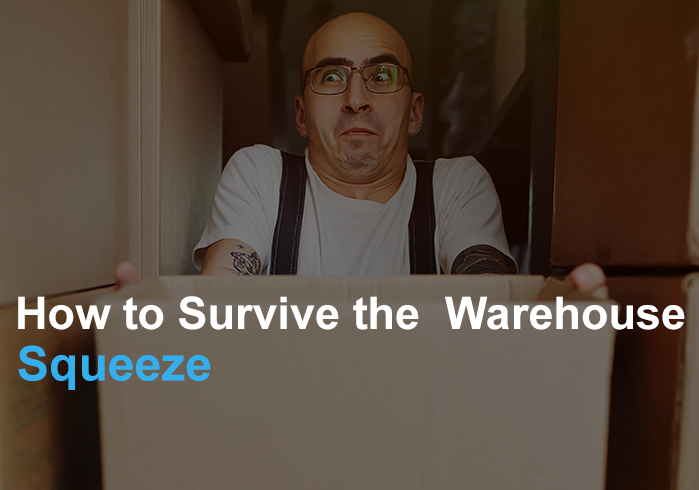
A new mindset for businesses in the shipping industry
New data indicates that at least 330 million square feet of warehouse space must be dedicated to eCommerce by 2025. Current levels of demand mean that failure to reach that target may cause significant difficulties for the industry and its customers. This fact then raises questions as to how that capacity is going to be built and how the industry is going to respond to the demands that are being made of it.
This article explores the possibilities and limitations for businesses that wish to survive this warehouse squeeze. Although the issues that are discussed in this article relate to the US, they also have relevance to other parts of the world that are dealing with a post-pandemic era that relies heavily on eCommerce. Consumers have become used to the reality of social distancing, and many have found online shopping a suitable alternative to traditional shopping. However, that has come at a cost to the shipping industry that must create the necessary capacity.
Dealing with capacity issues in the shipping industry
When the pandemic reached its zenith, the era of brick-and-mortar stores seemed shaky at best. Nobody wanted to or was allowed to do physical shopping. Instead, online shopping became the order of the day. Consumers started by complaining about the harsh social distancing measures, but soon got the hang of working and shopping online. Many shifted to online experiences, and the traditional high street was left bereft of customers.
As eCommerce boomed, there were questions about how the industry was going to deal with this increased demand. When the pandemic subsided or came under control (in the industrialized world at least), demand for goods online increased far beyond earlier, modest expectations. Some suggested that the boom could be temporary, but the trend towards online shopping has proved to be remarkably resilient.
The fact that restrictions have been significantly eased and that traditional stores have opened has not stemmed the tide of popularity that eCommerce is enjoying now. We are now nearly 18 months away from the time when eCommerce started booming, yet, demand is as high as ever. Experts are now speaking of this trend as a permanent order of business.
Scaling up operations to meet increasing eCommerce demand
The industry’s response to high demand was to scale up its operations. This included measures such as building out warehouses, expanding, and leasing additional space from third-party logistics service providers or 3PLs. In effect, these actions maxed out available warehouse inventory, creating an even bigger space problem. The industry is dealing with a serious warehouse shortage.
Meanwhile, companies are reporting labor shortages across the US. The pandemic took its toll, with some dying, retiring, or seeking new jobs. Certain worker profiles such as truck drivers were aging, and it was only a matter of time before this aspect of the crisis came to a head. The typical company is dealing with the double challenge of poor staffing and limited warehousing space. The demand for staff and space has driven up their costs and prices. Incidentally, the price of third-party and fourth-party logistics services (3PL and 4PL) are also rising. This significantly impacts the costs of doing business. It would not be entirely surprising if those costs are passed on to customers by way of increased prices. This might have the negative effect of destabilizing this market.
Preparing for a future of high demand for eCommerce services
Despite all these challenges, some companies and brands have implemented imaginative solutions. These solutions may not necessarily stop all expensive eCommerce service provision trends. However, they can alleviate problems until companies can find suitable alternatives or responses. Companies might take an example from the giants of eCommerce (including Walmart and Amazon) who are considering the option of hiring outside experts to advise them on an appropriate strategy.
Asking for help is a wise decision in this context. Organizations might consider making better use of technology to alleviate the costs of dealing with staff shortages. These technologies can also optimize the use of warehouse space through the provision of critical management information such as areas that are vacant and those that are full. Businesses can make the right decisions at the right time rather than waiting for a crisis to emerge.
The search for integration means that businesses are increasingly looking for solutions that can reconcile the different demands that are made on operations. If the problems of space and labor can be resolved using technology, there is no reason why businesses should not embrace them. Technology will certainly be an asset in a competitive market where every service provider will be looking to distinguish themselves. Companies are looking beyond survival and are considering means of thriving in the post-pandemic era. This is a shifting economy that will favour the imaginative and innovative while disfavoring those that believe in business as usual. Many opportunities are waiting to be unlocked by the right businesses.
The business case for integrated technology
Software and hardware will be a critical resource when leasing space from 3PL and 4PL providers. There is a minimum contractual requirement in many instances. The use of technology provides opportunities for seamless collaboration. The companies that have embraced modern technology will benefit from end-to-end visibility for their core products. Technology helps to quickly navigate the supply chain and access the right warehouse at the right time. Logistics providers are now the norm and the need for technology has followed this trend.
There are several technology packages that are available on the market today, including order and inventory management systems, all-in-one packages, and access to a cloud-native warehouse. Additionally, those companies that are looking to upgrade existing technologies will also have room at the table. The major advantage of cloud-based systems is their adaptability. This means that organizations can use them to scale quickly without significantly changing their operations. Integration comes with access to all-in-one support packages including marketplaces, payment platforms, and 3PL-related technologies. More importantly, all these enhancements can be adapted to the needs of the company.
The benefits of collaborating with outside providers
Small and medium-sized businesses do not always have the financial resources and technical expertise that is required to run an internal warehouse. Yet, the current squeeze on warehouse space and staffing implies that they can fall short of the necessary capacity for their businesses. Prime real estate in the industry has been claimed by larger players such as Amazon. The implication is that smaller businesses will struggle to remain competitive in the market.
Investing in 3PLs and 4PLs provides access to state-of-the-art warehousing without necessarily being responsible for its maintenance. This includes access to space and employees who are highly trained and well-equipped to do the job. Outsourcing this service can involve a fraction of the costs of building and maintaining an in-house warehouse. In fact, there are opportunity cost benefits because the third party will take care of logistics while the business focuses on other operational priorities.
Automation is one of the innovations that third parties are bringing to the table. Using machines means that limited warehouse space can be allocated intelligently. There are also other innovations such as self-driving robots which facilitate automated picking and movement. The reduction of human involvement has reduced errors and costs. All these benefits translate into a faster and more efficient service.
Wrapping up
The challenges of the post-pandemic era are here to stay. The supply chain is reeling from the pandemic, which took out many workers and created a shortage of space. However, using technology and third-party/fourth-party logistics service providers allows small and medium-sized businesses to thrive in the era. It all depends on whom they depend on when outsourcing their logistics.



